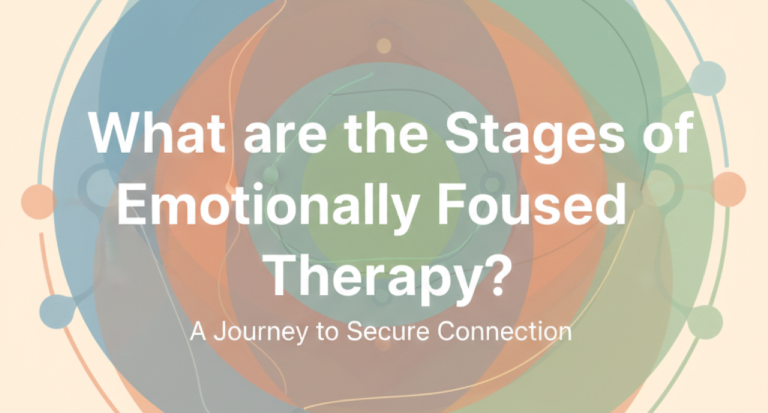Opioid withdrawal is a tough but important process to understand, especially for those dealing with opioid dependence or those supporting loved ones through it. When someone who has used opioids regularly stops or even reduces their intake, their body goes through some physical and mental changes as it adjusts from opioid use disorder.
These changes can be uncomfortable, making the symptoms of withdrawal challenging.
It’s important to know that while opioid withdrawal can feel overwhelming, it is temporary and manageable with the right help and support. With medical supervision, proper treatment, and the right recovery strategies, most people can get through it safely and start their journey to long-term recovery.
Understanding Opioid Withdrawal
Opioid or opiate withdrawal occurs when someone who has been using opioids regularly—whether prescription painkillers, heroin, or synthetic opioids—suddenly reduces or stops their intake.
Opioids affect the brain’s reward system by attaching to receptors that control pain and pleasure, which creates feelings of euphoria. Over time, the body becomes dependent on these substances to function normally. When the supply of opioids is stopped or reduced, the body reacts with a variety of symptoms as it tries to regain its natural balance without the drug.
Understanding these symptoms is crucial—both for those going through withdrawal and for their loved ones—because it helps manage expectations and ensures that proper care and support are in place.
Knowing what to expect can make the process less intimidating and more manageable.
Opioid Withdrawal Timeline
Opioid withdrawal varies depending on many factors, including the type of opioid used, how long someone has been using it, and how much they’ve been using.
However, there’s a general timeline for what people can expect during the withdrawal process.
Initial Onset
Symptoms of opioid withdrawal typically begin within 6 to 12 hours after the last use of short-acting opioids (like heroin or immediate-release prescription medicines).
For long-acting opioids (like methadone or extended-release painkillers), withdrawal symptoms may not appear until 30 hours after the last dose.
Early withdrawal syndrome symptoms often include anxiety, muscle aches, runny nose, and sweating, as well as drug cravings.
Peak Symptoms
Symptoms usually peak around 2 to 3 days after the last dose.
This is when individuals experience the most intense discomfort, which can include severe muscle pain, nausea, vomiting, diarrhea, fatigue, and heightened anxiety.
At this stage, the body is actively trying to adjust to the absence of opioids, and withdrawal can feel overwhelming. That said, knowing that this is the most difficult period can help manage expectations.
Duration
Opioid withdrawal typically lasts between 5 to 10 days, but the exact duration can vary.
For many, the worst symptoms start to ease after the first few days, but physical symptoms like fatigue or sleep disturbances can linger.
Long-Term Symptoms
Even after the acute withdrawal phase ends, some individuals experience post-acute withdrawal symptoms (PAWS), which can last weeks or even months.
PAWS may include symptoms like depression, irritability, insomnia, and anxiety.
These long-term symptoms are part of the brain’s process of re-adjusting after prolonged opioid use. While they’re less intense than the early withdrawal symptoms, they can still impact recovery, and ongoing support is often needed during this phase.
100% Confidential Support is Available 24/7
No matter what you’re going through, you’re not alone. Our dedicated team is here to provide a safe, judgment-free space where you can talk openly and honestly. Whether you need emotional support, resources, or just someone to listen.
We’re here for you—completely confidential and always respectful of your privacy. Call us today!
Common Opioid Withdrawal Symptoms
Opioid withdrawal affects everyone differently, but there are some common symptoms that most people will experience at various stages of the process.
Early Symptoms
The first signs of opioid withdrawal typically show up within 6 to 12 hours of the last dose, and they can include:
- Anxiety and agitation. Feeling restless, uneasy, or on edge is common.
- Muscle pain. This can feel like flu-like body aches or tension in the muscles.
- Watery eyes and a runny nose. These are similar to the symptoms of a cold or allergy.
- Sweating. A constant feeling of being overheated or excessively sweating is typical.
Mid-Phase Symptoms
As withdrawal progresses, typically 2 to 3 days in, symptoms become more intense. At this stage, people commonly experience:
- Nausea and vomiting are among the more disruptive symptoms and can make it hard to keep food or fluids down.
- Diarrhea happens because the digestive system reacts to the lack of opioids, leading to frequent, watery stools.
- Sleeping becomes difficult as the body adjusts to not having opioids to calm it.
- Cravings and the urge to use opioids again can be very strong and often peak during this phase.
While these symptoms can be overwhelming, they tend to improve with time, especially with proper treatment.
Later Symptoms
Once the acute withdrawal phase begins to subside (typically after 3-5 days), some individuals may experience symptoms for several weeks or even months, including:
- Deep feelings of sadness or hopelessness are common as the brain works to restore its natural chemical balance.
- Ongoing tiredness and low energy can persist well after the initial withdrawal phase.
- While less intense, the desire to use opioids may continue for a longer time.
- Difficulty concentrating, forgetfulness, or a sense of mental cloudiness are also common.
Contact Solutions Healthcare
Battling with Drug and Alcohol Addition? Remember, you are not alone and we are here to help you!
Factors Affecting Opioid Withdrawal
The experience of opioid withdrawal is highly individualized.
The main factors influencing the symptoms and timeline you might experience include:
Type of Opioid Used
Different types of opioids affect withdrawal experiences. For example, heroin is fast-acting and has a shorter half-life. Withdrawal symptoms from heroin often begin within 6-12 hours after the last dose and can be intense, peaking at 2-3 days.
Prescription opioids like oxycodone or hydrocodone tend to have a longer half-life than heroin, which means the onset of withdrawal might be delayed. Still, symptoms can be just as severe once they begin. These opioids are often taken in a controlled, measured way, which can make it easier to manage withdrawal compared to illicit opioids.
Fentanyl is significantly more potent than heroin or prescription opioids and can cause intense and rapid withdrawal symptoms. The potency of fentanyl can make the withdrawal process more challenging and potentially more dangerous, especially if someone has been using it in large amounts.
Duration of Opioid Use and Dosage Levels
The longer someone has been using opioids and the higher their dosage, the more intense and prolonged their withdrawal experience is likely to be.
Chronic opioid use can cause physical dependence, meaning the body becomes accustomed to having the drug in the system, so there might be a longer duration of withdrawal and a greater need for professional treatment to manage these symptoms effectively.
Overall Health, Mental Health Status, and Support System
People with pre-existing medical conditions or weakened immune systems can sometimes experience more severe symptoms and take longer to recover.
Mental health status also affects the withdrawal process. People with underlying conditions like anxiety, depression, or PTSD may face more intense emotional symptoms during withdrawal, making it harder to cope with the physical symptoms.
A strong support system—including family, friends, or treatment professionals—can greatly affect the outcome of the withdrawal process. Having access to emotional and psychological support during withdrawal can help alleviate anxiety and improve overall recovery outcomes. This can also come in the form of support groups for others dealing with withdrawal and substance use disorders.
Treatment Options for Opioid Withdrawal
Here are some of the most common treatment options for opioid withdrawal:
Medical Detox
Medical detox is an important first step for many people experiencing opioid withdrawal.
Withdrawal symptoms can range from fairly uncomfortable to life-threatening, depending on the opioid used, duration of use, and other factors.
Medical supervision ensures that withdrawal is safely managed, minimizing the risks of complications like dehydration, heart issues, or seizures.
Medications
There are several medications available to help manage opioid withdrawal symptoms and cravings.
These medications are often used as part of a broader treatment plan that may include counseling and therapy. Some of the most common options include:
- Methadone is a long-acting opioid agonist. It helps reduce withdrawal symptoms and cravings by acting on the same brain receptors but in a controlled way. It is often used in medically supervised detox and long-term maintenance treatment.
- Buprenorphine (Suboxone) is a partial opioid agonist. It works like methadone but with a lower abuse potential. It helps minimize or alleviate withdrawal symptoms and cravings without causing the same high as other opioids.
- Clonidine is a non-opioid medication that can help manage certain withdrawal symptoms like anxiety, sweating, and agitation. It’s often used in conjunction with other treatments.
Therapies and Support
In addition to medications, counseling and therapy play a vital role in treating opioid withdrawal and supporting long-term recovery.
Cognitive-behavioral therapy (CBT) helps identify and change negative thought patterns that contribute to addiction.
Group therapy allows one to connect with others experiencing similar challenges, creating a support network that fosters empathy, accountability, and motivation for recovery.
Alternative Therapies
Holistic approaches can complement traditional medical and therapeutic interventions, promoting healing of the mind, body, and spirit.
Some alternative therapies include:
- Yoga helps to reduce stress, improve emotional regulation, and foster physical well-being.
- Acupuncture helps some manage withdrawal symptoms like anxiety, pain, and cravings.
- Mindfulness practices like meditation can help individuals cope with cravings, stress, and emotional discomfort in a healthy, non-addictive way.
How to Get Help with Opioid Withdrawal
If you or a loved one is struggling with opioid addiction, seeking professional help is essential for ensuring a safe and effective recovery.
Whether through inpatient or outpatient care, having access to trained medical professionals and addiction specialists can significantly improve the chances of successful detox and long-term sobriety.
At Solutions Healthcare, we provide personalized care plans tailored to each individual’s unique needs. Our expert team guides clients through the opioid withdrawal process, offering medical supervision, medications, and therapy options to manage symptoms and foster healing.
Contact Solutions Healthcare today to learn more about how our comprehensive, personalized treatment plans can support you or your loved one through opioid withdrawal and into lasting recovery.
References
- National Institute on Drug Abuse (NIDA): Opioids
- National Institute of Health (NIH): Reward Processing by the Opioid System in the Brain
- American Psychiatric Association (APA): Opioid Use Disorder
- Science Direct: Opioid Dependence
- Wiley Online Library: Opioid withdrawal symptoms, a consequence of chronic opioid use and opioid use disorder: Current understanding and approaches to management






















